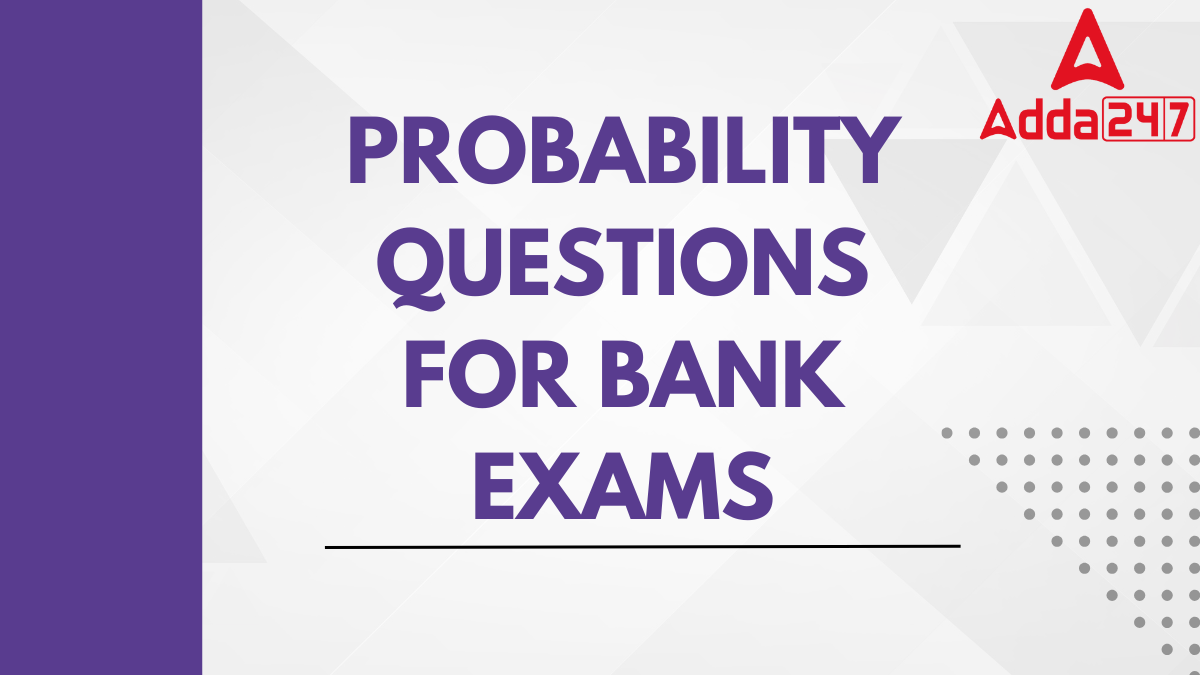Probability is a fundamental concept in quantitative aptitude that appears frequently in bank exams. These questions test a candidate’s ability to analyze scenarios involving randomness and uncertainty, making it essential for problem-solving under pressure. In banking, understanding probability helps in risk assessment, investment decision-making, and financial forecasting.
Probability Questions for Bank Exams
In bank exams, probability questions range from basic concepts, such as the calculation of simple events, to complex problems involving multiple events, permutations, and combinations. To excel in this section, it’s important to grasp key principles like independent and dependent events, conditional probability, and the application of formulas. This guide provides a comprehensive overview of probability types, tips, and commonly asked questions to ensure success in your bank exams.
Question (1-10) : Answer the following Questions of the Probability that are listed below:
1) Bag A contains 5 blue and 6 red balls, bag B contains 7 blue and 5 red balls. If 6 balls are drawn at random from each of the bags, find the product of the probability that 4 blue and 2 red balls are drawn from bag A and 3 blue and 3 red balls are drawn from bag B.
A. 1621/35802
B. 1750/35574
C. 1623/35082
D. 1619/35820
E. none of these
2) A bag contains 6 apple, 5 Banana and (x+4) Orange. If two fruits are taken at random and the probability of getting both are apple is 1/14, then find the value of x.
A.5
B.6
C.4
D.8
E.None of these
3) The box contains a certain number of red balls and certain number of green balls. If two balls are selected randomly, the probability that balls being red is 1/6, then find the total number of balls in that box?
A. 10
B. 8
C. 7
D. 5
E. Cannot be determined
4) If 4 cards are drawn at random from a pack of cards, find the probability that at least 3 cards are spade cards.
A. 913/15000
B. 813/17000
C. 713/17000
D. 913/16000
E. 913/20825
5) A bag contains 6 red balls, three green balls and three pink balls. If two balls are drawn at random, then what is the probability that one ball is pink and other is green or one ball is red and other is pink?
A. 9/22
B. 8/23
C. 10/23
D. 9/19
E. None of these
6) A bag contains 4 red balls and 4 yellow balls. If four balls are picked at random, then what is the probability that balls picked alternatively are of different colour, if repetition not allowed?
A. 1/7
B. 6/35
C. 1/5
D. 8/35
E. None of these
7) An urn consists of some green, red and black balls. Total number of balls in the urn is 15. If two balls are picked, Probability that the two balls being green is 2/21. Now one ball is picked from the urn, find the probability that the ball is either red or black.
A. Cannot be determined
B. 2/15
C. 1/5
D. 1/10
E. 2/3
8) Two persons stole the gold chain. The probability of catching the first person is ¼. The probability of catching the second person is 1 / 6. What is the probability that only one of them is caught?
A. 6 / 12
B. 2 / 3
C. 1 / 3
D. 5 / 12
E. None of these
9) A bag contains (x + 3) pink, 4 blue and 6 white color balls. If two balls are taken random and the probability of getting both being blue color balls is 2/51, then find the total number of pink color balls?
A. 6 balls
B. 7 balls
C. 8 balls
D. 5 balls
E. None of these
10) There are three groups of fire extinguishers in a city i.e. P, Q and R. In group P there are (x-6) females and (x+21) males. In group Q, there are 3 females and 12 males whereas in group R, there are 5 females and 7 males. One person is selected at random from each group. Find the number of females in group P, if the probability of selecting all three males is 4/15.
A. 81
B. 85
C. 83
D. 71
E. 89
Answers :
1) Answer: B
2) Answer: B
3) Answer: E
4) Answer: E
5) Answer: A
6) Answer: B
7) Answer: E
8) Answer: C
9) Answer: C
10) Answer: A





 Quadratic Equation Questions for SBI Cle...
Quadratic Equation Questions for SBI Cle...
 I am Weak in Maths, Can I Crack Bank PO?
I am Weak in Maths, Can I Crack Bank PO?
 Quadratic Equation Questions for SBI PO ...
Quadratic Equation Questions for SBI PO ...








